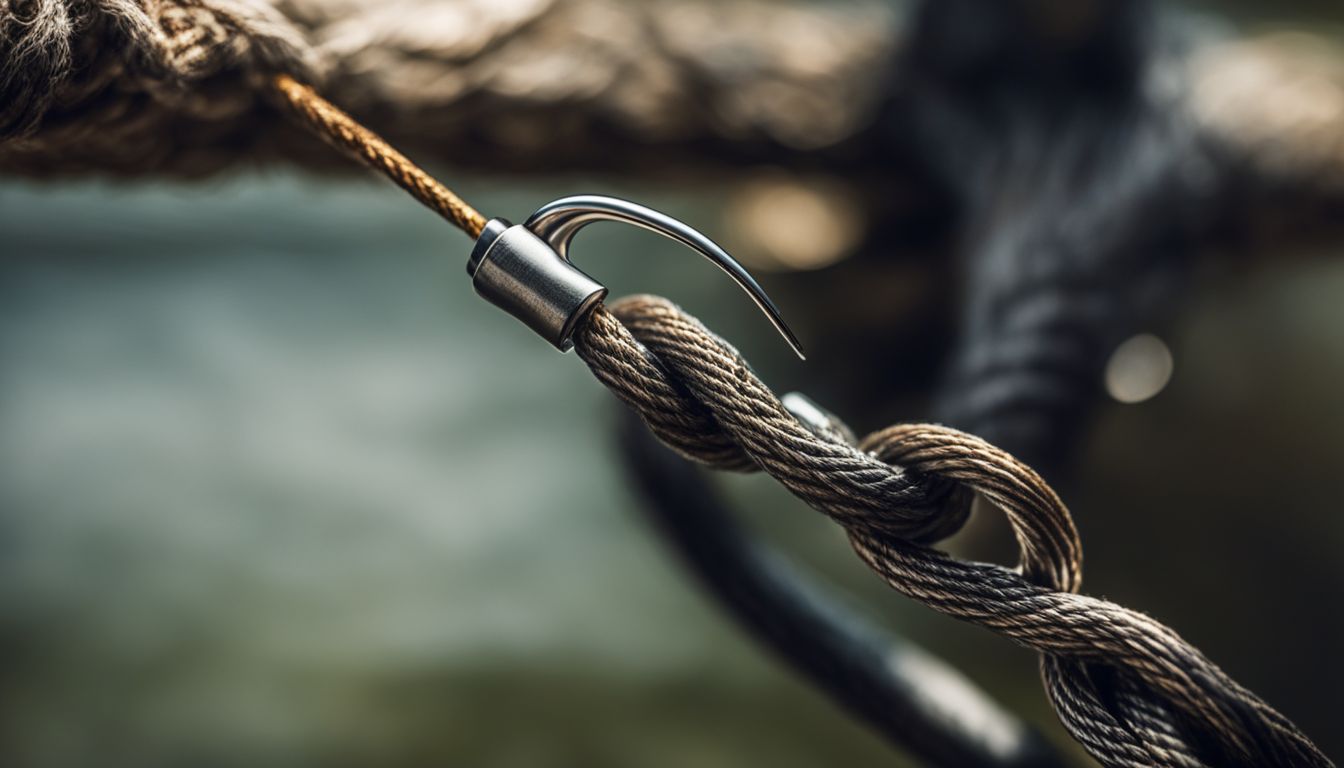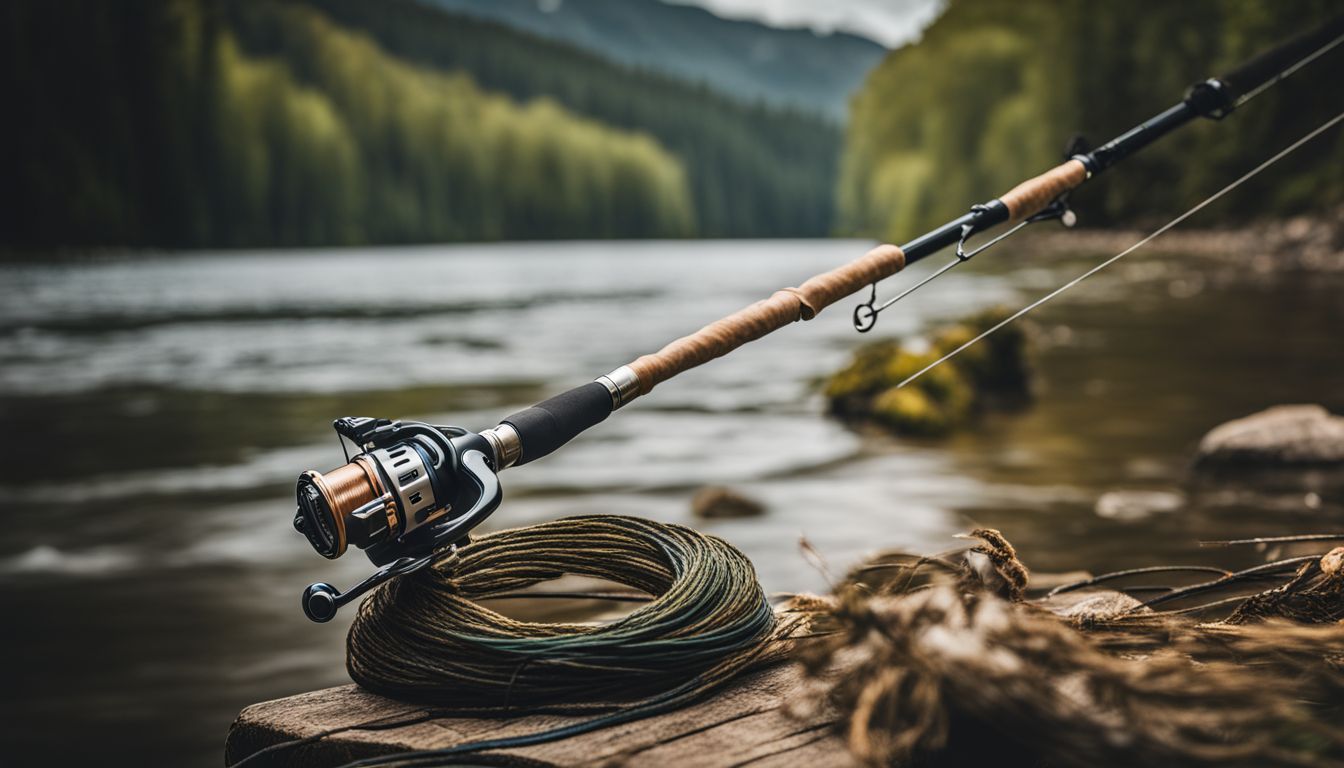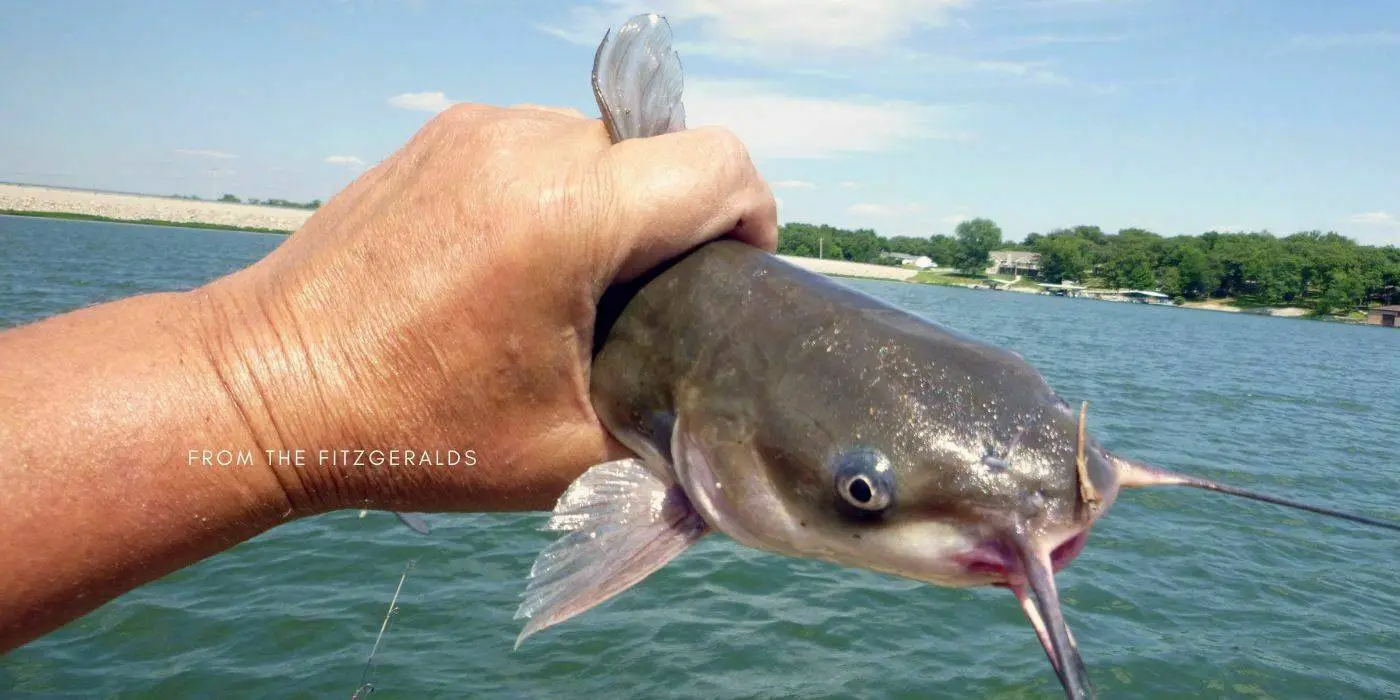Every angler can relate to the heart-wrenching moment of losing a spectacular catch due to a poorly tied fishing knot. Trust me, it’s an experience that leaves you feeling like the one that got away.
After countless mishaps and hours poured into research, I’ve discovered a foolproof method to attach hooks onto fishing lines using eight essential knots. Are you pumped up to elevate your angling skills? Let’s dive headfirst into this thrilling adventure together!
Key Takeaways
- Tying a good fishing knot is important for keeping your line and hook together, ensuring that you don’t lose fish.
- There are 8 essential knots every angler should know: Improved Clinch Knot, Palomar Knot, Turle Knot, Blood Knot, Double Surgeon’s Loop, Wire Line to Mono Knot, Tucked Sheet Bend, and Snelling a Hook.
- Each knot has its own purpose and can be used in different fishing situations.
- Practice regularly and inspect your knots before fishing to ensure they are strong and reliable.
Understanding the Importance of Properly Tying a Fishing Knot

Tying a good fishing knot counts a lot. It keeps your line and hook together. You need it to catch fish well. If you tie the wrong knots, your line will break. This makes you lose time and fish.
Each knot has its own use in fishing. For example, some knots link the line to the hook or lure with strength, like the Palomar Knot. Others join two lines together like the Blood Knots do.
You can have more fun fly fishing if you know how to tie these key knots fast. With bad or slow tying, less time is spent on real fishing.
Learning all of them is helpful for different types of fish too – from bass to crappie! Each knot gives an edge in various cases and methods, be it tackle rigging or fly-fishing techniques.
8 Essential Knots Every Angler Should Know

Here are the 8 essential knots that every angler should know for tying a hook on a fishing line: the Improved Clinch Knot, Palomar Knot, Turle Knot, Blood Knot, Double Surgeon’s Loop, Wire Line to Mono Knot, Tucked Sheet Bend, and Snelling a Hook.
Improved Clinch Knot
I can’t go fishing without using the Improved Clinch Knot. It’s a top knot that all anglers must know. This is more than your basic clinch knot. The extra tuck under the final wrap makes it stronger and harder to break.
Tying this knot is not hard at all, even if you are new to fishing. It took me just a few tries to get it right, and now I use it for most of my catches!
Palomar Knot
The Palomar Knot is a top pick for many anglers. It’s used to attach the hook or fly to your line when you’re getting ready to fish. This knot is super strong and won’t give up under stress, making it reliable even with lines that are 20 pounds or above.
Rather than just tying around the line tie, it doubles up your line for extra strength. Many people like this knot more than the classic fisherman’s one!
Turle Knot
The Turle Knot is a great knot to use when you have thin lines and small hooks. I like using this knot because it’s really strong and reliable. It’s also super easy to tie, which is always a plus for me.
The Turle Knot is often used in freshwater fishing, so if that’s your thing, give it a try!
Blood Knot
The Blood Knot is a knot that anglers should know because it’s great for joining two lines together. Whether you’re connecting a braided main line to a fluorocarbon leader or combining two lines of similar diameter, the Blood Knot can do the job with strength and reliability.
To tie this knot, make 5-7 turns around both sides of the line and wrap the ends around each side. It’s quick to tie and creates a strong connection. Anglers in both saltwater and freshwater fishing find this knot useful for its durability.
Double Surgeon’s Loop
The Double Surgeon’s Loop is a knot that anglers should definitely know. It’s used to create a loop at the end of your fishing line. It’s really simple to tie – all you have to do is fold over the end of the line and then tie a single overhand knot.
This knot, also known as the Surgeon’s Knot, is great for tying thin diameter lines because it maintains good strength. Plus, it has low visibility in the water, which can be a big advantage when you’re out fishing.
So make sure you learn how to tie the Double Surgeon’s Loop and add it to your fishing skills toolbox!
Wire Line to Mono Knot
The Wire Line to Mono Knot is a strong and reliable knot that every angler should know. It’s used to connect wire fishing line to monofilament fishing line, making it perfect for both saltwater and freshwater fishing.
This knot ensures a seamless transition between the two types of lines, so you don’t have to worry about the line breaking or coming loose during a fight with a fish. It’s often used in combination with other essential fishing knots, adding an extra layer of security to your setup.
Tucked Sheet Bend
The Tucked Sheet Bend is an important knot for anglers to know. It’s a simple sheet bend knot with an extra tuck, which makes it even more secure. To tie this knot, you pass the end of the line through the loop of the sheet bend.
This is a great way to attach a hook to your fishing line because it can withstand tension and pressure when reeling in a fish. It’s also useful for connecting different types or sizes of fishing lines together.
So next time you’re out on the water, make sure you know how to tie a Tucked Sheet Bend for a strong and reliable connection between your hook and fishing line.
Snelling a Hook
Snelling a hook is an important skill for every angler to know. It’s a super strong way to attach a hook to your fishing line, ensuring that it stays secure during a big catch. The snell knot is known for its versatility and can be used to attach a leader or tippet directly to the baited hook.
To snell a hook, start by tying a loose overhand knot and then pass the loop around the end of the hook. This simple yet effective knot provides a reliable connection that won’t slip or come loose when you’re reeling in your catch.
So next time you’re out on the water, make sure you know how to snell your hooks properly!
Step-by-Step Guide on How to Tie Each Knot
I’ll show you how to tie each knot step-by-step. These knots are important for tying a hook on a fishing line. Here are the 8 essential knots that every angler should know:
- Double Line Loop Knot: This knot creates a strong loop at the end of your fishing line. It’s great for attaching lures or hooks.
- Loose Overhand Knot: This simple knot is used to secure the tag end of your line to prevent it from slipping or unraveling.
- Palomar Knot: The Palomar knot is perfect for braided fishing lines. It’s easy to tie and provides excellent strength.
- Improved Clinch Knot: This versatile knot is widely used in fishing. It works well for attaching hooks, swivels, or lures to monofilament or fluorocarbon lines.
- Turle Knot: The Turle knot is ideal for connecting leaders or tippets with flies or small lures.
- Blood Knot: Use this knot when joining two lines of similar diameter together, like when creating a tapered leader.
- Double Surgeon’s Loop: This loop knot is handy for making a strong and flexible connection between your mainline and leader.
- Snelling a Hook: Snelling involves tying a loop around the shank of the hook, ensuring proper alignment and increasing hooking efficiency.
https://www.youtube.com/watch?v=jtBdM2UykcQ
Tips and Tricks for Maintaining and Troubleshooting Your Fishing Knots
Maintaining and troubleshooting your fishing knots is crucial for a successful fishing experience. Here are some tips and tricks to help you with your knot tying:
- Regularly inspect your knots: Before you start fishing, take the time to inspect your knots. Look for any signs of damage or weakness, such as fraying or loose ends.
- Use the right knot for the job: Different situations call for different knots. Make sure you are using the correct knot for the type of line you are using and the specific fishing technique you are employing.
- Practice tying knots: The more you practice tying knots, the better you will become at it. Take some time to practice tying different knots so that they become second nature to you.
- Wet your line: Before tightening a knot, make sure to wet your line with water or saliva. This will reduce friction and help the knot tighten properly.
- Trim excess line: After tying a knot, trim any excess line close to the knot. This will prevent it from getting tangled or snagged on anything while you’re fishing.
Conclusion
In conclusion, mastering the art of tying fishing knots is crucial for anglers of all skill levels. By learning and practicing these 8 essential knots, you’ll be able to secure your hooks on fishing lines with confidence.
Whether you’re bass fishing or crappie fishing, these knots will help ensure that your hook stays securely attached to your line. So grab your gear, practice those knots, and get ready for a successful day out on the water!
FAQs
1. What are the essential knots every angler should know?
The eight essential knots every angler should know are the clinch knot, improved clinch knot, Palomar knot, uni knot, blood knot, surgeon’s knot, loop knot, and double uni knot.
2. How do I tie a hook on a fishing line using the clinch knot?
To tie a hook on a fishing line using the clinch knot: pass the end of the line through the eye of the hook; make 5-6 wraps around both strands of the mainline; thread the loose end through the small loop near where it entered; moisten and pull both ends to tighten.
3. Which is stronger – an improved clinch or Palomar knot?
The Palomar knot is generally considered stronger than an improved clinch as it provides better strength and security when tying hooks or lures to your fishing line.
4. How can I tie a loop at the end of my fishing line for lure attachment?
You can create a loop at the end of your fishing line by tying either a perfection loop or a non-slip loop (also known as Rapala loop).
5. Can I use these essential knots for other purposes besides attaching hooks and lures?
Yes, these essential knots can also be used for various other purposes in fishing such as joining two lines together (double uni), creating loops for dropper rigs (surgeon’s), or connecting different types of lines (blood).




